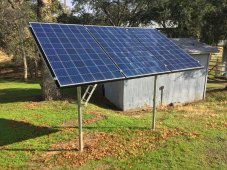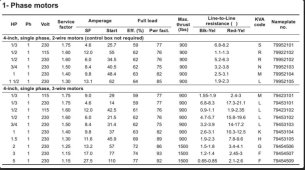JustPractical
New Member
- Joined
- Aug 31, 2021
- Messages
- 106
OK - so, based on the inrush and MPP not really up for taking a hard momentary surge amperage draw, MPP recommended I go with TWO of their LV6548 running in parellel to give me my 240 split voltage. Each of the units is rated for 6,500 watts continuous.
My MAX inrush current (if everything magically started at once) would be about 45 amps on each unit. My question of the moment is how much battery do I need to connect to each unit. I will be using 48 volt batteries. The audit and sizing excel sheet on this site showed I needed 25,888 watt hrs to run two days with no charge. That seems really high considering how low the running amperage and duty cycles are, but assuming it is accurate, that would be almost 550 Amp-hours. Seems high. Thoughts? Aaccording to the excel sheet and all my math, to run fridge, sump pump, well pump and oil fired furnace, I will need:
Two of the LV6548's (for 13kw output) for about $3,0000
Six 48V 100AH 5.12KWH LIFEPO4 batteries for about $10,000
Misc cables to hook that portion up - at least afew hundred $$$
Then, I will need at least 4,000 watts of solar panel to charge it (according to the sizing tool/excel sheet).
The inverters and batteries are way bigger than I expected I needed. Am I doing the math wrong, or am I just an overly optimistic solar newbee?
My MAX inrush current (if everything magically started at once) would be about 45 amps on each unit. My question of the moment is how much battery do I need to connect to each unit. I will be using 48 volt batteries. The audit and sizing excel sheet on this site showed I needed 25,888 watt hrs to run two days with no charge. That seems really high considering how low the running amperage and duty cycles are, but assuming it is accurate, that would be almost 550 Amp-hours. Seems high. Thoughts? Aaccording to the excel sheet and all my math, to run fridge, sump pump, well pump and oil fired furnace, I will need:
Two of the LV6548's (for 13kw output) for about $3,0000
Six 48V 100AH 5.12KWH LIFEPO4 batteries for about $10,000
Misc cables to hook that portion up - at least afew hundred $$$
Then, I will need at least 4,000 watts of solar panel to charge it (according to the sizing tool/excel sheet).
The inverters and batteries are way bigger than I expected I needed. Am I doing the math wrong, or am I just an overly optimistic solar newbee?







